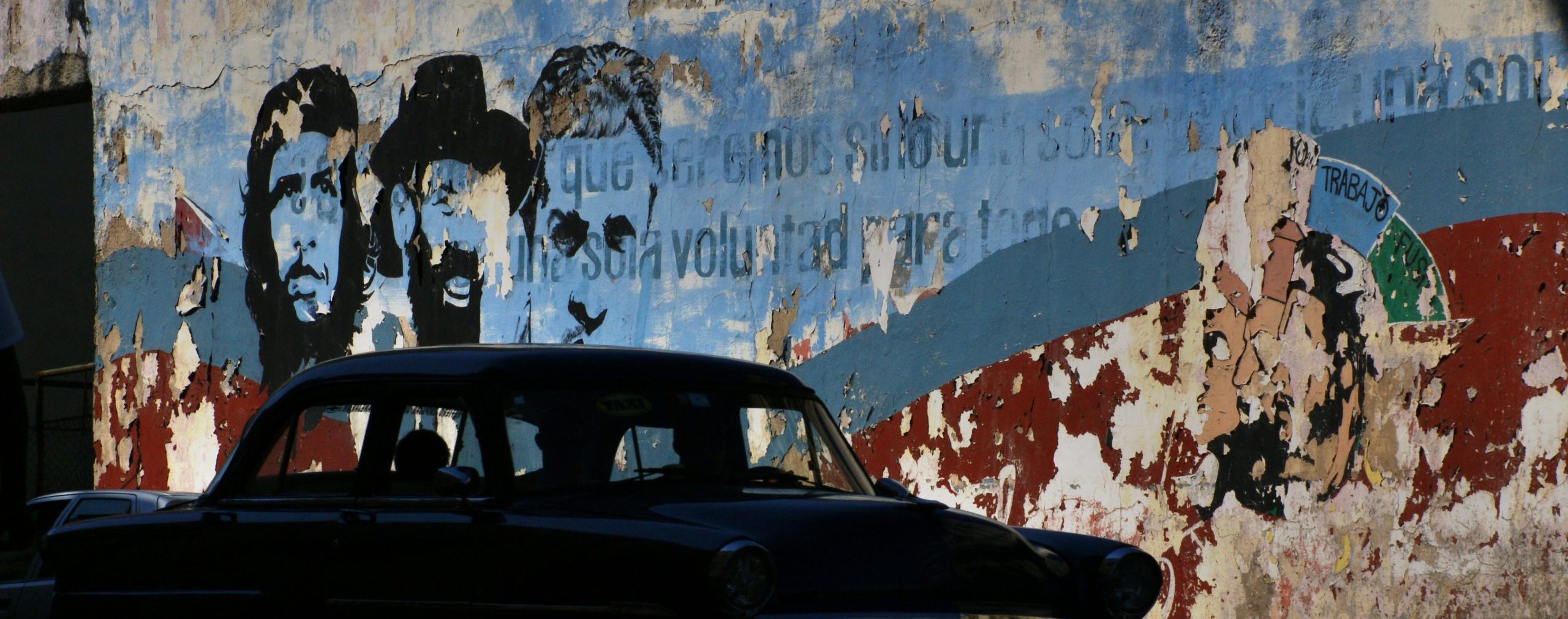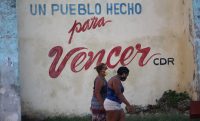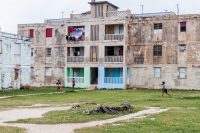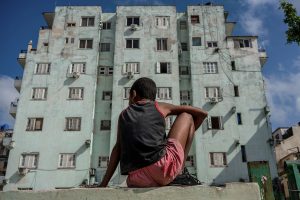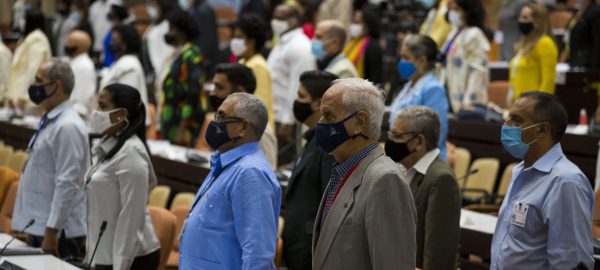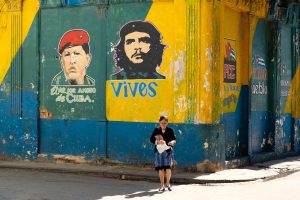Source:Libertad Digital
There is no place for “elvispreslians”, as Fidel Castro put it. Nor for women and blacks, quotas that the regime uses to make up for reality.
The Cuban revolution, promoted by Fidel Castro, is the great lie of Cuban history. With the excuse of overthrowing Batista’s dictatorship, the Comandante launched a guerrilla movement that ended up taking power in 1959 and has remained in power to this day. A business for the Castro family and their co-religionists in which, until very recently, they have not allowed blacks or women to enter and in which – of course – there was no place for homosexuals, persecuted by the communist regime since its beginnings.
The ruling elite have used the revolution to subjugate the people for more than 60 years. That is why they keep it alive. It has long since ceased to be the end, to become the means. A tool of control, the excuse for everything. The romantic image that has been sold of this movement has little to do with reality. It has been bloody, oppressive and discriminatory from the beginning. As Che Guevara himself acknowledged in his speech to the UN in 1964, they carried out a real cleansing of the opposition as soon as they came to power. “We have shot, we have shot and we will continue to shoot”, he warned.
With the revolution began the dictatorship of terror. Cubans are not allowed to live according to their convictions. You only have to look at how those who have tried to do so have ended up. There are truly tragic episodes in the revolution. Among them is undoubtedly that of the so-called Military Production Support Units (UMAP) which were set up in the early years of the communist regime. They were nothing more than concentration camps similar to those in Nazi Germany “for all those who the revolution considered to be outside the framework of the society it wanted to build: freaks, rockers, faggots, whores…”, explains Cuban lawyer Eloy Viera Cañive.
What is different is persecuted, even in 21st century Cuba. This is something that the lawyer, who had to emigrate to Canada, where he works as an analyst and journalist specialising in Cuban legislation, is well aware of. For seven years, he worked in Cuba as a lawyer in the National Organisation of collective law firms, “the only one that offers legal services to individuals”. And he saw it all. “Revolutions cannot last forever”, he told Libertad Digital.
In his opinion, the main problem on the island is that “the law is not a limit to anything, because it is a totalitarian system”. “There you have a Constitution with a lot of recognised rights and at the end of the day it’s like nothing. The law of the Communist Party is the one that matters“, he said. “What we have in Cuba is a system that has raised up a political class that uses any method at its disposal to perpetuate itself and eliminate any competition. That is the revolution”.
No social progress
The communist regime continues to stretch the chewing gum of the revolution with the excuse of making progress in what they call “social conquests”, which in reality have led to an internal struggle within the political class to “divide up the country”.
It is all a lie. “If you look at the statistics on Cuban social spending today, you will see that”, says Viera Cañive. “Cuba has invested 500 times more in hotels – which do not fill up – than in public health, education, or agriculture, when they have to import 80 per cent of their food”, he explains.
“These are official data that are there, that are not invented by me. This political class has simply decided that tomorrow the future of their families and themselves can be the appropriation of those same hotels that they are building with public money and they have bet all their horses on one single industry, the tourism industry. Even in the midst of a global pandemic that has caused travel rates to Cuba to decline to unsuspected levels”, insists the Cuban lawyer.
“The revolution is simply a group of people who are living with the historical privileges they have accumulated on the basis of the suffering of an entire people. It is nothing else”, he adds. The regime has shown itself to be “super-conservative”. “The least it has done is to revolutionise anything, for a very long time now. It has decided to remain static in a place that allows it to maintain power. There is no revolution.”
Blacks renounce their blackness
The revolution that the Castros have carried as a banner and that Díaz-Canel waves with pride is nothing more than a fallacy fed by the white elite in power. “Men, white, straight” who have tried to build a society in their image and likeness, even if to do so the Cuban people have had to pretend to be what they are not. In Cuba, nothing is what it seems. Everything is “pure euphemism”.
So much so that the communist regime tries to whitewash – in the strictest sense of the word – the statistics. You only have to take a walk around Havana to see that the figures do not match what is reflected on the street. The make-up operation begins by allowing the census to be based on the self-perception of the surveyed person, instead of the criterion of the civil servant. This makes it possible for everyone to register as they see fit, as they feel or as it suits them. And the fact that many Cubans deny their blackness to register as white shows that “there is a deep-rooted problem with raciality” that “has not been solved”, says Viera Cañive.
The second trap of the established system is that it separates blacks from mestizos in the official registers. According to the last published census (2012), the black population represents around 10% and the mulatto population around 25%. Together they make up 35%. The aim of making this division is to minimise the visibility of the black population, which the regime considers to be of an inferior category and more prone to crime, as we will explain below.
Based on official figures, one third of the Cuban population is of Afro-Cuban origin. But the actual percentage could be considerably higher. Independent sociologists believe that the actual figure could be around 60 per cent. Not everyone who claims to be white for the census is white. Many hide their black status, aware of the marginalisation and inequalities their race has historically faced in Cuba.
Although slavery on the island was abolished in 1886, the Afro-Cuban population has had to continue fighting for decent living conditions to this day. Fidel Castro, aware of the weight of the black masses in the country, showered them with promises. The revolution has boasted of values of equality that it has failed to live up to. For the regime, blacks are nothing more than a quota that it uses as it pleases to pretend that there is no problem of racism in Cuba.
The fiction of quotas
The quota system has allowed the dictatorship to improve its image, “to create a fiction”. An example of this is that “we have one of the parliaments in the world with the highest representation of women and the highest representation of blacks”, says Viera Cañive. “These are numbers used by the Cuban government, but they have absolutely no significance whatsoever”. They are straw men, “with no decision-making capacity. And the worst thing is that they don’t get there by choice of their community. The party says, because of an image problem, we need to put four blacks here…”. Pure make-up.
The current president of the Cuban parliament, Esteban Lazo, is clearly a quota. “A party cadre, a politically irrelevant person with a very low cultural level. He is a guy incapable of articulating ideas, beyond having a piece of paper in front of him”, he says. “His election is based on colour, not ability. The same example can be seen in the current Cuban vice-president (Salvador Valdés), another person without a great deal of intelligence. And that also symbolically reaffirms the superiority of the white, politically speaking, in relation to the black. Far from being a favour, it does even more damage.“
The Díaz-Canel government acknowledged the existence of the problem in 2019 with “the launch of the National Plan against racism”. “A public policy that no one knows about, because it has not been published what its bases or arguments are…. But it is based on an official recognition that there is an unresolved racial problem”, explains Viera Cañive. It was impossible for it to be resolved because for decades the regime has looked the other way and has only patched it up to get out of the way. It has always been dealt with in a “very opaque, very non-transparent” way.
In Cuba, talking about inequalities has always been taboo, branded as anti-revolutionary. “Any activism, even if it is racial, is seen as an enemy of the Cuban government”, the lawyer points out. This has allowed some negative beliefs about the black race to take root in the Cuban population. Among them is that of the “delinquent nigger”. For the communist regime, black citizens are always the first suspects. One only has to look at the percentage of blacks in prison. Fidel Castro himself acknowledged during a speech at the Karl Marx Theatre (2002) that 80% of the prisoners were black.
Persecution of homosexuals
There was never a place for homosexuals in the Castro’s communist regime. Fidel made this clear from the beginning. He never shied away from lashing out at the “lazy pepillos, sons of the bourgeoisie, who go around with their tight little trousers” and “Elvispreslian attitudes”, as he defined them in a speech on 13 March 1963. “Our society cannot allow such degenerations. Socialist society cannot allow such degenerations“, the Comandante declared.
“He was always very reticent on the subject of mariconería, as we say in Cuba”, Viera Cañive points out. He made it clear that “they were not going to be tolerated within the revolution”. “The image they had to offer was that of macho, military guerrillas, dressed in green. And that is what they have maintained. Until very recently, there was an offence in the Penal Code that said that anyone who proposed homosexual relations to another could be punished”.
Student organisations encouraged students to report on classmates who “showed deviance”. This was stated, for example, in the communiqué of the Union of Young Communists and the Union of Secondary Students published in the magazine Mella on 31 May 1965. They were invited to expel from the classrooms “counter-revolutionary and homosexual elements”, those who expressed “some kind of petty-bourgeois softness” or apathy “to revolutionary activities”, in order to “prevent their entry into the universities”.
During the Cuban revolution, homosexuals have been silenced, discriminated against, persecuted, arrested, imprisoned and forced to do hard labour. The aim was that “people would be inhibited from living their lives as they understood it”, Viera Cañive points out. “Machismo and homophobia has been part of the Cuban government’s official policy for a very long time”. The most outrageous thing is that “today they try to sell it in the opposite way, as if inclusion were one of the benefits of the revolution”.
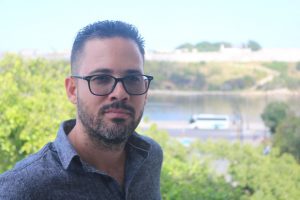
Eloy Viera Cañive
“Everything has been built on a big lie”, explains the lawyer, “that’s why it pisses me off so much that this discourse is so easily bought, that Manu Pineda comes from Spain to play the pro-green or that the leftists from Europe come and sell the world the Cuba of their dreams. The one that only appears on television and in their minds”.
What more would Eloy Viera Cañive want than for that Cuba to be real. He would not have had to leave his homeland. “It has been very hard for me to naturalise myself in a different place, because I get up in the morning thinking about Cuba and I go to bed working for Cuba. It’s like I’m still living in Cuba without being in Cuba”.
Share this article
On This Day
- 1552 Battle of Bicocca.
- 1565 Miguel López de Legazpi founds Cebu as Villa de San Miguel.
- 1806 María Cristina de Borbón Dos Sicilias was born.
History of Spain
26 August 2020
27 January 2021
Communism: Now and Then
23 December 2022
28 July 2021
